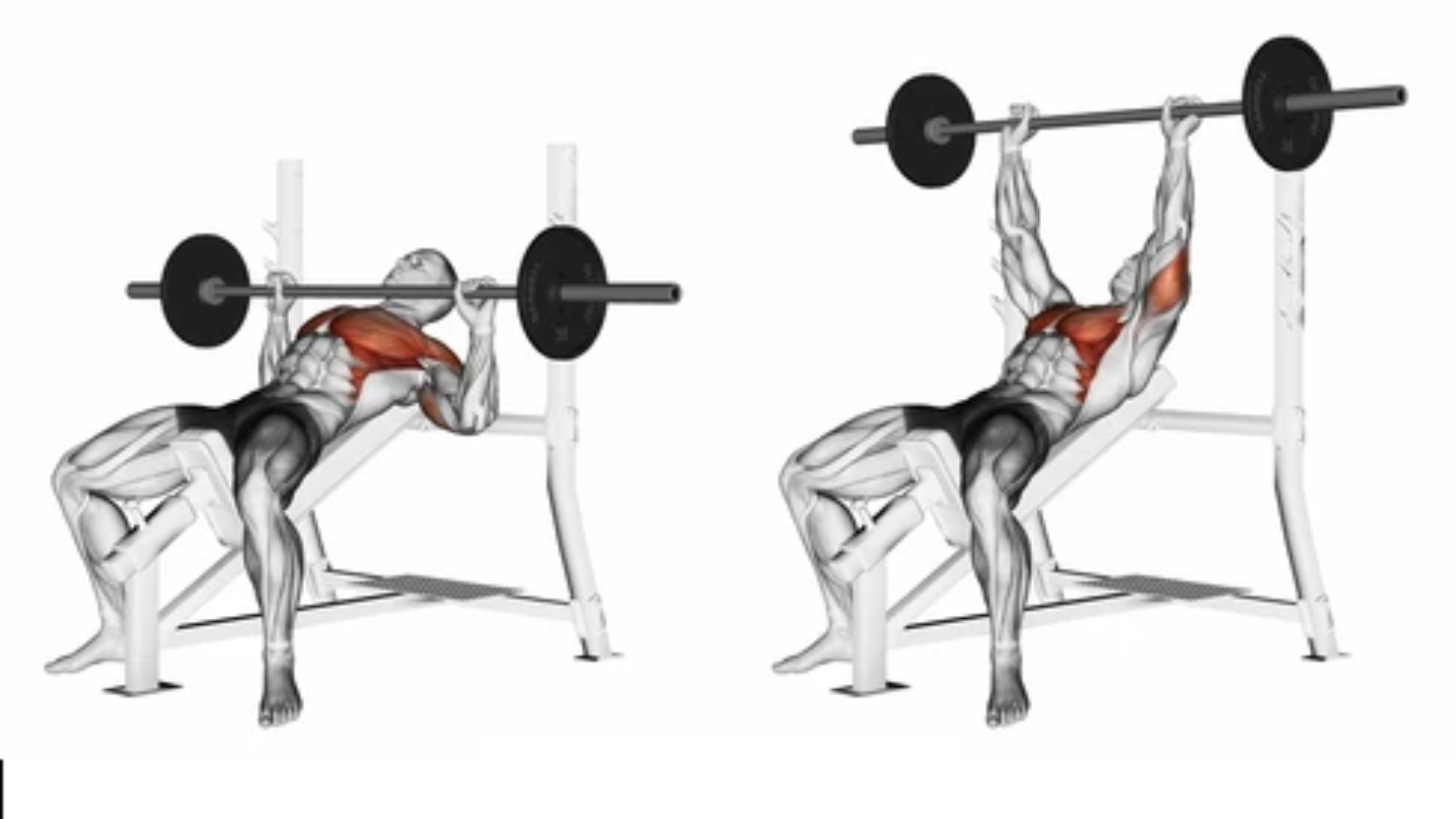
What is an Incline Barbell Bench Press?
The incline barbell bench press is a compound movement, which means more than one group of muscles is engaged in this single movement. Your targeted workout would be of your upper chest, but you will also feel the squeeze on your shoulders and triceps. As with most pressing motions, adjusting the bench to an incline-usually between 30-45°-shifts more of the workload onto the clavicular head of the pectoral muscles responsible for the upper portion of your chest.
How to Perform the Incline Barbell Bench Press
Set the Bench at an Incline
Set the bench to an angle of about 30 to 45 degrees. If the angle is too high, you will be engaging more of your shoulder, and if it’s any lower, you might as well do a flat bench press.
Position Yourself
Lie back on an incline bench so your self is positioned in such a way that your eyes are directly under the barbell. Make your feet stay firmly planted on the ground to be stable.
Grip the Bar
Take a shoulder-width overhand grip of the barbell, with thumbs circling around the bar for safety. The wider the grip, the more it works the chest; the narrower the grip, the more emphasis it places on the triceps.
Unrack the Bar
Press the bar off the rack with your core engaged, holding it above your chest with straight arms. Arms should be fully extended but avoid lockout in the elbows.
Lower Bar
Lower the barbell slowly to your upper chest, about to the area of the collarbone. Keep your elbows away from your body, about at an angle of 45 degrees without completely flaring them out, which may cause shoulder strain.
Press the Bar Up
Push the barbell back up explosively, focusing on squeezing your chest muscles at the top of the movement. Again, remember not to lock out your elbows.
Repeat
Repeat for 8-12 reps based on your goals and do 3-4 sets for maximum effect.
Benefits of Incline Barbell Bench Press
Prioritizes the Upper Chest
As mentioned earlier, the incline press places greater emphasis on the upper part of the pectorals. It leads to a harmonious and aesthetically appealing chest—especially that highly sought-after “upper shelf” appearance.
Shoulders Become Stronger
The angle will have you naturally recruiting more of your front deltoids, which translates to a stronger shoulder over time, with no extra need for isolation to the shoulders.
Improves Pressing Strength
The incline press is not only hypertrophic in nature but also helps improve your overall pressing power. So, if you want that number on the flat bench to increase, adding incline work will pay dividends.
Engages Triceps and Stabilizers
Because this is a compound lift, your triceps and the stabilizing muscles such as the rotator cuffs are also hard at work; that makes this an efficient exercise to build overall upper-body strength.
It’s here Barbell Deadlift how to do it and what are the benefits
FAQs
Q: How often can I perform the incline barbell bench press in my chest workouts?
Q: It’s a good exercise, but mix up your chest exercises. Bring in some other movements as well, such as flat bench press and dumbbell flies, to get overall balanced development.
Q: What if I get pain in my shoulders with this movement?
A: This usually comes from using the wrong form of lifting-form with flared elbows or too steep an incline. Check to see that your form is correct or lighten the weight and give it a try.
Q: Is not the incline barbell bench press better than the flat bench press?
A: Not necessarily better, but it targets different parts of the chest. Ideally, both should be part of your routine for complete chest development.

